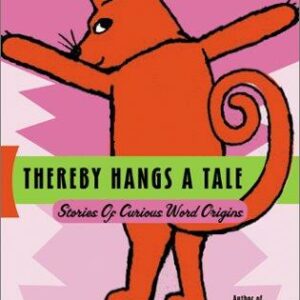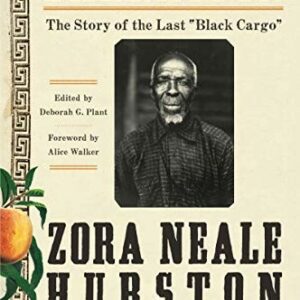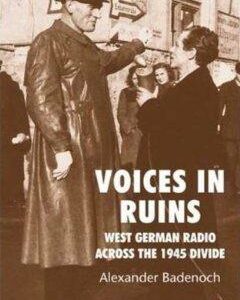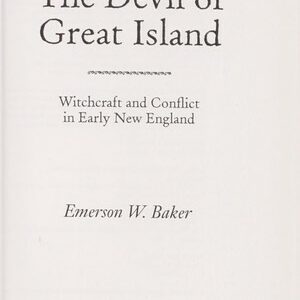The Lost Dogs
$17.00
| Title | Range | Discount |
|---|---|---|
| Trade Discount | 5 + | 25% |
- Description
- Additional information
Description
The bestselling story of survival and our powerful bond with man’s best friend, in the aftermath of the nation’s most notorious animal cruelty case. Featuring a new Afterword with updates on the Vick dogs.
Animal lovers and sports fans were shocked when the story broke about NFL player Michael Vick’s brutal dog-fighting operation. But what became of the fifty-one dogs who survived? As acclaimed writer Jim Gorant reveals, their story is the truly newsworthy aspect of this case. The Lost Dogs traces the effort to bring Vick to justice and turns the spotlight on these infamous pit bulls, which were saved from euthanasia by an outpouring of public appeals coupled with a court order that Vick pay nearly a million dollars in "restitution" to the dogs.
As an ASPCA-led team evaluated each one, they found a few hardened fighters, but most were lovable, friendly creatures desperate for compassion. In The Lost Dogs, we meet these amazing animals, many of whom now live in loving homes and work in therapy programs. The Lost Dogs exposes the terrible practice of dog fighting and shows us that even after being subjected to heartbreaking abuse, above all, a dog still wants to be man’s best friend.
"Gorant’s fine book is a heartwarming tale of how the love and commitment of a community can heal even the deepest and most abhorrent of traumas." — Sports Illustrated
"The Lost Dogs is a page-turning investigation of dog fighting and an implicit indictment of the sport." — The Daily Beast
"The Lost Dogs has the quality of a page-turner as it chronicles the entire story, in all its upsetting detail, of the dogs’ rescue and re-entry into the world." — Los Angeles Times
"A well-researched, moving account" — The New Yorker Book Blog
"The Lost Dogs shows us that goodness can be found in the places where we may least expect it." — The Christian Science Monitor
"Packed with vivid characters and dramatic incidents, The Lost Dogs is a sobering reminder that man’s best friend isn’t always viewed that way. But this deeply affecting portrayal also reflects that fairy-tale endings are within reach when those involved are infused with spirit, confidence and commitment." — The Seattle Kennel Club
"Gorant has crafted an insightful and uplifting tale about the way that nurture can sometimes triumph over nature, and how the remnants of cruelty can be transformed through the power of hope and love." -Allen St. John, author of The Billion Dollar Game: Behind the Scenes at the Super Bowl
"Jim Gorant provides a powerful narrative that is, at times, heartbreaking, but also illuminating and inspirational. You will come away from The Lost Dogs warmed by the knowledge that it wasn’t only Vick who got a second chance." — George Dohrmann
"The Lost Dogs should be read by dog lovers." — Temple Grandin, author Animals in Translation
"The Lost Dogs is a gripping story of redemption that uncovers the other side of the Michael Vick story." — Ken Foster, author of The Dogs Who Found Me
"Jim Gorant goes beyond the headlines of Michael Vick and the Bad News Kennels to richly tell the rest of the story: how these amazing dogs, in the wake of such brutality, help bring out the best in the human spirit." — Tom Verducci, author of The Yankee YearsJim Gorant has worked as a magazine editor and writer for twenty years and is currently a senior editor at Sports Illustrated. He is the author of Fanatic: Ten Things All Sports Fans Should Do before They Die, and his work has appeared in magazines such as Men’s Journal, GQ, and Outside.1
A BROWN DOG SITS in a field. There's a collar around her neck. It's three inches thick and attached to a heavy chain, which clips onto a car axle that's buried so one end sticks out of the ground. As the dog paces in the heat, the axle spins, ensuring that the rattling chain won't become entangled.
The dog paces a lot, wearing a circle in the scrubby weeds and sandy soil around the perimeter of the axle. She paces because there's little else to do. Sometimes a squirrel or a rabbit or a snake crosses nearby and she barks and chases it, or she lunges and leaps after the dragonflies and butterflies that zip and flutter past.
She flicks her tail at mosquitoes and buries her muzzle in her fur, chewing at the itchy crawly things that land on her. If she's lucky she digs up a rock that she can bat around and chew on, but otherwise there are just the weeds and the bugs and the hot sun inching across the sky. She is not alone. Other dogs are spread around this clearing in the trees. They can see one another, hear one another bark and whine and growl, but they can't get to one another. They can't run, they can't play, they can't anything. They can get close to their immediate neighbors, stand almost face-to-face, but they can never touch, a planned positioning meant to frustrate and enrage them. For some it does; for many it simply makes them sad.
Out in the field are mothers, fathers, off spring, littermates. The families are easy to spot. There's a group of sand-colored dogs, some with pink noses, some with black snouts. There is a group of red dogs, some small black dogs, a few white ones, a few black-and-whites. A handful of other colors and shapes are mixed in.
All are pit bulls and many have that classic pit bull look, stocky and low to the ground, front shoulders higher than haunches and a wide muscular chest that dwarfs narrow hips, so that they look as if they're waiting for their backsides to grow into their fronts. Their necks are thick and hold up rectangular heads. Some are bigger, as big as seventy pounds, while another group is more compact, reaching maybe twenty-five pounds. These smaller ones are actually Staffordshire bull terriers, a close relative of the American pit bull terrier.
The brown dog has a soft face, with searching eyes and an expressive brow that furls into deep ridges and undulating rolls when she's scared or nervous or trying to figure out whether she needs to be either. Her uncropped ears rise from the top of her head until they fold over, but one of them folds differently from the other, so that it hangs lower, making her look as if she's eternally asking a question.
To help fight the heat, there's water spread about in large tubs, sometimes a little dirty but drinkable. Once a day a man comes to put food in the bowls. At least it's usually once a day. Sometimes two or three days go by before the sound of his all-terrain vehicle breaks the monotony. As he gets off the vehicle and makes his way across the clearing, all the dogs run to the end of their chains, barking and wagging their tails as if they're excited to see him. But when the man actually gets close to them, they tuck their tails and skulk away. Only after he has moved on do they creep back over to their bowls and eat.
They can't see anything beyond the perimeter of the clearing, but they are not alone. Another clearing lies through the trees where another fifteen or so dogs live on chains, and beyond that, at the edge of the woods, is a small compound with kennels, freestanding pens, and four sheds. The buildings are small and painted pitch black, including the windows. One is two stories tall, and the men who own these sheds, who live and work here, they call that one "the black hole."
A breeze stirs the trees—scrub pines and sugar maples, a few pin oaks. The lilt of songbirds mixes with the whine of cicadas and the low, singular whoooo, whoooo of a mourning dove. The summer heat draws moisture off the Atlantic, thirty miles beyond, adding the weight of humidity to the air.
Within the perimeter of each axle there's a doghouse. Rough-hewn plywood structures, they provide something else for the dogs to chew on and claw at to while away the hours. They also offer a break from the sun but not much relief from the heat—just as in winter they stop the wind but don't do much to protect against temperatures that can drop into the thirties.
Curled up in their little houses the dogs look and listen and sniff the air. They are incredibly intuitive creatures. They learn by watching—trainers sometimes let young dogs watch experienced dogs in action so they see how to behave. They can detect odors 100 million times more faint than people can. They can hear sounds at a broader range of frequencies than humans, and they can hear them from four times as far away. People who train dogs for search and rescue contend that dogs can hear a heartbeat from a distance of five feet, which gives them insight into the mood and disposition of the people and animals they come in contact with.
As pack animals, they are keenly aware of the behavior of those around them. One dog can tell what another is thinking and intending simply by observing the way he acts. When two dogs meet, there is a detailed ritual of movements and gestures. The way they hold their ears, tail, head, their posture. Everything means something. Attitudes, feelings, intentions, dominance, and submission can be established immediately. So can a challenge.
Dogs understand what's expected of them. When people are around, dogs see what wins them rewards and praise and what leads to scorn. Something deep inside of them, woven into the very fabric of their being, a genetic impulse, compels them to please those around them. But sometimes, the things that men want from them cut against their natural inclinations, setting off an internal chain reaction of anxiety and uncertainty, triggering hormones and nervous system fluctuations. When they are extremely scared, dogs secrete a powerful musk that other dogs can smell from great distances.
The things they see and hear and smell have an impact on them, too. Studies have shown that if two mammals are placed side by side in boxes and the first one is given electric shocks, just by listening to the suffering the second one produces identical brain waves and nervous system activity; the trauma isn't limited only to the animal that's experiencing the pain.
Out in the field is the little brown dog with the floppy ear—none of the dogs know what's happening around them, but they do know something isn't right. They've seen things they are not supposed to see. They've heard terrifying sounds and they've smelled fear and pain drifting in the air. The brown dog lays her chin on the ground and exhales. Her brow folds into a furry question mark. The afternoon is fading and the heat has begun to fade too, but little else is certain.
Sometimes men come and take a few of the dogs away. Sometimes those dogs come back tired and panting from running and running. Sometimes the dogs come back scarred and limping. Sometimes they come back looking the same, but acting completely different. Sometimes they don't come back at all, as if they've simply disappeared. As if they've vanished into a black hole.
2
IT'S NOT EASY TO get to 1915 Moonlight Road. Branching off of the two-lane country highway that curves up through the tidelands, Moonlight Road looks more like a driveway than a street, a narrow unlined stretch of blacktop that twists into an old-growth stand of trees. The houses along the road are sparse—worn trailers, single-story cabins and larger suburban manors pop up in clusters of two or three, separated by cornfields, woods, and open expanses.
Driving west on Moonlight Road, the house appears suddenly, its white shape set off against a tree line that rises beyond it. It sits close to the road, directly across from the Ferguson Grove Baptist Church (Pastor J. D. Charity), a white clapboard building without a cross on it that sits in a clearing. From the front, the white brick appears bright against the black roof. A peaked portico with long columns and large, arched windows give it a distinctive architectural twist. Inside there are five bedrooms, including a master with a fireplace and a hot tub.
A six-foot-tall white fence surrounds a yard thick with broad-leafed Bermuda grass. Outside the gate at the end of the driveway there's a camera and an intercom. Motion sensor lights hang on the garage. The flower beds are tidy and neat, dotted with trim young shrubs. In the backyard a boat sits on a trailer. There's an above-ground pool and a full-length basketball court complete with white painted lines and glass backboards that can be raised and lowered.
The house looks like any one of a half dozen others on the street, another newly risen McMansion that signals the country's burgeoning real estate economy and provides a plush home base for some happy, anonymous family. But the property extends well beyond the pool and the unmarked white fence. It twists back into the dense woods where several dozen dogs sit chained to car axles and four sheds stand among the trees, nearly invisible from the road because they are painted pitch black.
Michael Boddie was still a teenager when he began dating a girl who lived across the courtyard at a housing project in Newport News, Virginia. Her name was Brenda, and by the age of fifteen she had borne the couple's first child, Christina. A son, named after his father, followed the next year, and then another son, Marcus, came four years later. By the time the pair married, in 1989, they'd added a fourth. That last child, Courtney, took the name Boddie, but the three older kids, who were ten, nine, and five, stuck with their mother's maiden name, Vick.
The family lived together in a three-bedroom apartment in a housing project in the downtrodden east end of Newport News. Michael Boddie did three years in the army, then found work as a painter and sandblaster at the shipyards. The couple's extended families helped raise the kids while Brenda finished high school then took a job, first at a Kmart, then as a schoolbus driver.
Boddie has insisted that he was around throughout his kids' lives, but Michael Vick has described him as something more like an uncle: an older male relative who helped support the family but came and went randomly and for varying periods of time. Vick has also said that his father struggled with drugs, and Boddie's history does show a drunk driving charge and a stint in rehab.
The kids, by most accounts, stayed out of trouble, at least as much as possible for someone growing up in the Ridley Circle apartments in a town that had been nicknamed Bad Newz. Sports were a diversion. The Vick children spent a lot of time at the Boys and Girls Club of Greater Hampton Roads. Michael, who everyone called Ookie, showed great athletic ability, first in baseball and then in football. He followed in the footsteps of an older cousin, Aaron Brooks, who was a star quarterback in high school, then at the University of Virginia, and in the NFL.
Four years younger than Brooks, Michael Vick went to the same high school to play for the same coach, Tommy Reamon, a former NFL player himself. After Vick's freshman season, that school, Homer L. Ferguson High, closed and both he and Reamon moved on to Warwick High. At Warwick, Vick showed off the strong arm and blinding speed that would make him a star and earn him a choice of college scholarships. He picked Virginia Tech, in large part because it was relatively close to home.
After sitting out his first year to develop his game, Vick emerged as the Hokies' leader during his red-shirt freshman season in 1999. The first time he stepped on the field, he scored three touchdowns in little more than a quarter of play and went on to lead the team to an 11 – 0 record and the national championship game. His team lost that game to Florida State, 46 – 29, but Vick's renown only grew. During the season he set multiple records, finished third in the Heisman Trophy voting, and energized the sport with visions of a new type of player—a hyperathletic do-it-all quarterback who could win games with his arm or his legs or both. Suddenly everyone in football had a Michael Vick fixation: They were either watching the real Vick or looking for the next one.
The following season Vick did nothing to hurt his reputation, although an injury caused him to miss parts or all of three games, and the Hokies lost the one contest he sat out fully. Still, he guided the team to a 10 – 1 record and was named MVP of the 2001 Gator Bowl as he led his team to a win over Clemson.
Vick was now twenty and fully grown. At two hundred pounds and slightly less than six feet tall, he was thick yet compact. His large brown eyes and small wide nose were off set by a strong jaw that made it look as if he had an under-bite. Topped off with a goatee, the total effect of these traits was to give Vick an appearance that, while handsome, could fairly be described as almost canine.
Although he had two years of eligibility left, Vick decided to skip the remainder of his college career and enter the 2001 NFL draft. He was taken first overall by the Atlanta Falcons, which signed him to a $62 million contract and received an almost instant return on its investment. The next year, Vick's first as the full-time starter, he made it to the Pro Bowl and led the Falcons to the playoff s for the first time in four years. Vick returned to the Pro Bowl and the playoff s in 2004 and the Falcons rewarded him with a ten-year, $130 million contract, making him the highest paid player in the league at the time. Another Pro Bowl season followed in 2005, and he flourished off the field, too, ringing up endorsement deals with Nike, Powerade, Kraft, Rawlings, Air Tran, EA Sports, and Hasbro worth multiple millions.
Like many young athletes, especially those who've grown up poor, Vick spent his money freely. He bought cars and jewelry and toys. There were numerous houses, including one in Atlanta, Georgia; a condo in South Beach, Florida; a place he bought for his mother in an upscale section of Sussex, Virginia; and another house he was building nearby. He paid for his father's drug rehab in 2004 and gave the old man a few hundred bucks every few weeks to keep him going. He supported a wide range of family and friends, handing out Escalades to his inner circle. He also purchased a fifteen-acre tract of land in Smithfield, Virginia, a small town in rural Surry County. The address was 1915 Moonlight Road.
US
Additional information
| Dimensions | 0.8000 × 5.2600 × 7.9900 in |
|---|---|
| Imprint | |
| ISBN-13 | |
| ISBN-10 | |
| Author | |
| Audience | |
| BISAC | |
| Subjects | animal rescue, gifts for dog lovers, dog books, shepherd, Golden, boston, nfl books, Rescue dogs, Dog lover gifts, dog dad gift, dog dad gifts, animal abuse, dog fighting, pit bulls, terrier, Michael Vick, ASPCA, rescue dog, sports illustrated, animal cruelty, dog owner, weiner, cavalier, doberman, labradoodle, bull, pitbull, dauchsunds, puppies, charles, for, nature, HIS054000, Sports, sports books, of, loss, Animals, Dogs, cat, animal books, pets, king, lovers, NAT039000, german, adults, gifts for men, lover, wildlife, dog, puppy, dog book, retriever, bulldog |











